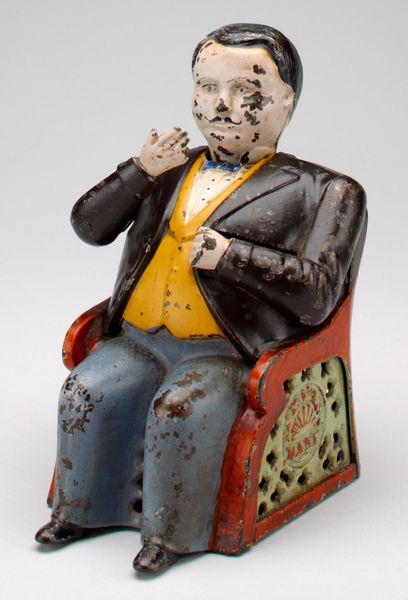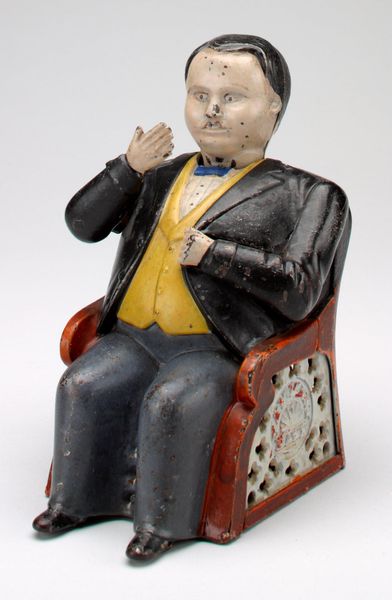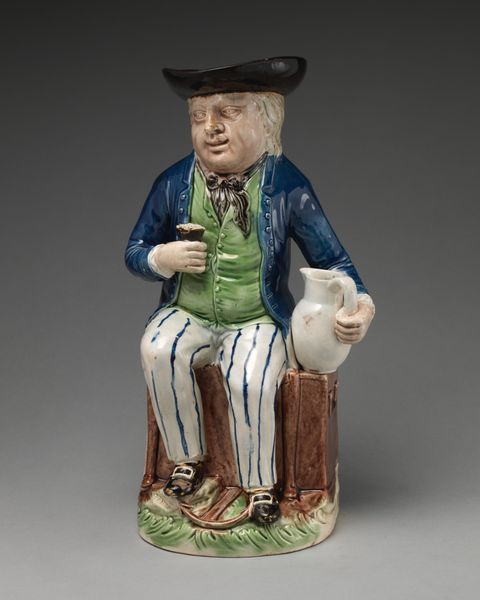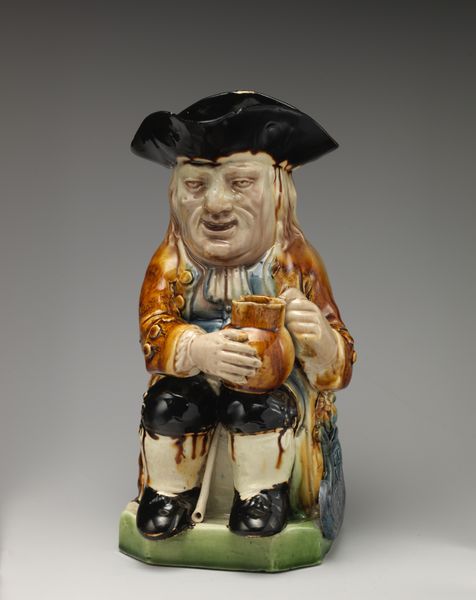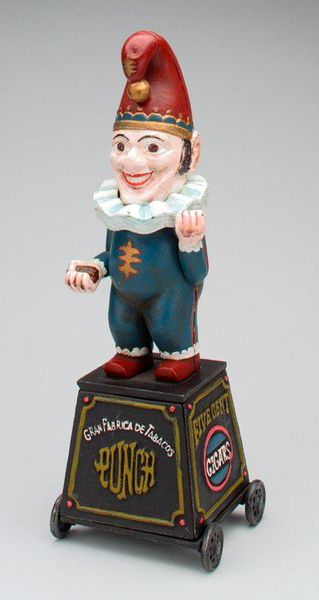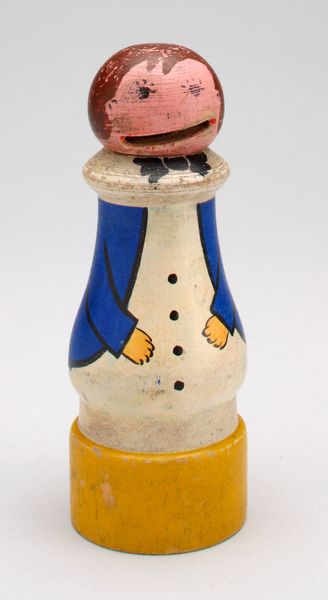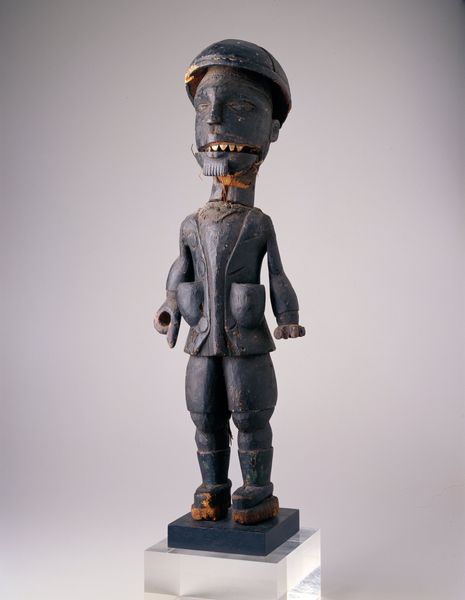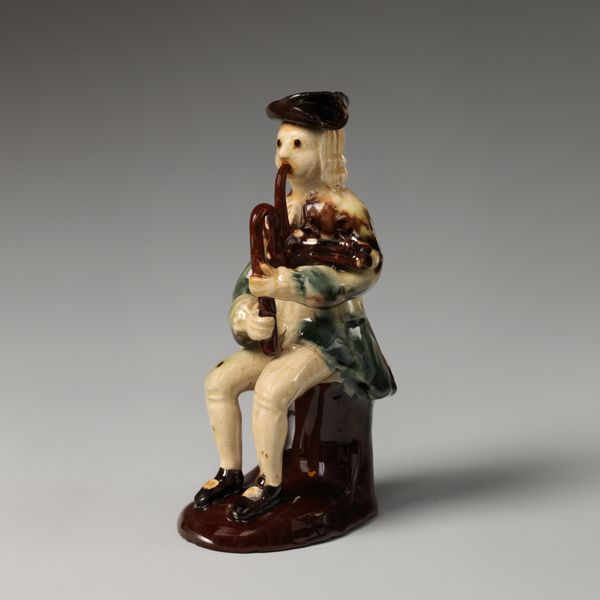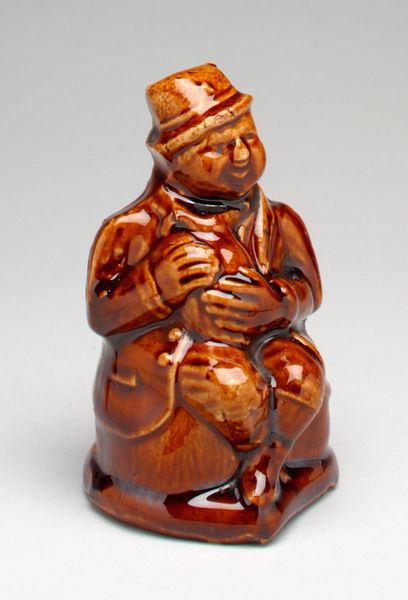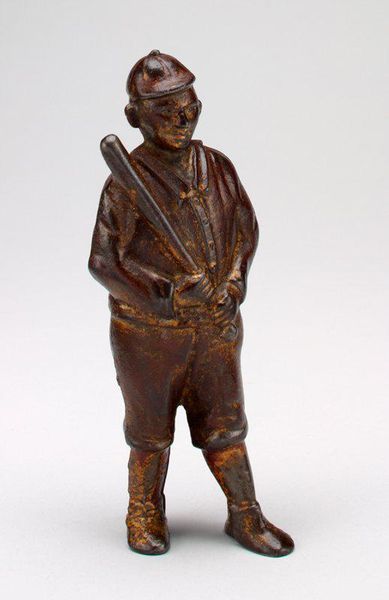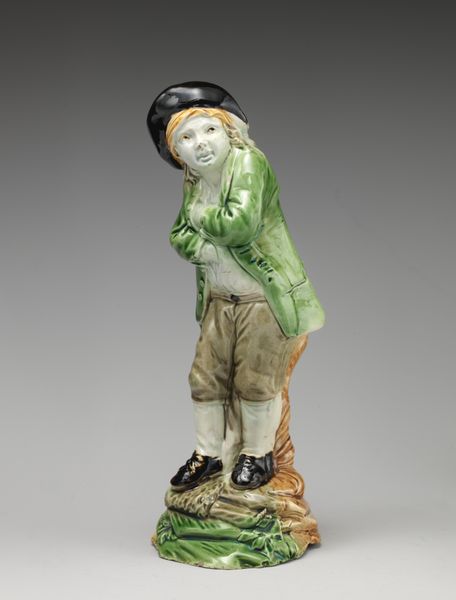
metal, sculpture
#
portrait
#
metal
#
caricature
#
figuration
#
sculpture
#
genre-painting
Dimensions: 5 1/2 x 3 3/8 x 4 3/8 in. (13.97 x 8.57 x 11.11 cm)
Copyright: Public Domain
Curator: This is a peculiar piece isn't it? Made around 1873, this sculpture made of metal is named -Tammany Bank- or -Little Fat Man- mechanical bank. You will find it in the Minneapolis Institute of Art. Editor: Absolutely peculiar! He looks rather apprehensive, doesn’t he? Almost as if he knows he’s about to be, well, exploited! There’s a comical sadness about his face. The exaggerated features lend themselves to that interpretation, but then his very posture suggests someone caught between anxiety and anticipation. Curator: Right, and it’s the name ‘Tammany Bank’ that gives us the essential social and political context. Tammany Hall, as it was known, was this powerful, often corrupt, political machine in New York City. So this ‘little fat man’, dressed in what we can assume are fancy clothes, he's meant to symbolize a political figure ready to accept your...deposits. Editor: Ah, so this isn't just any old sculpture. It's a satirical jab at a system rife with corruption! It seems very much connected with wealth disparity within the lower and middle classes during the reconstruction. This is a direct shot, right to the heart of the political class? The piece suddenly holds this tangible quality, especially if you know how to make the mechanism function, in its interaction with its owner. It mocks while literally swallowing our savings. The perfect caricature! Curator: It's a critique made all the more poignant through its design as a children’s toy. This bank becomes not just a place for money, but also an introduction to a particularly harsh truth about society for young people, about how these societal hierarchies can be perverted, literally swallowing public money, by those in positions of power. This idea, linking it to current perspectives about gender or social disparities still applies. Editor: It brings to question this continued reality... The very nature of wealth, power and class differences becomes tangible when it exists inside a toy you can hold. How have things changed, really? Still making us ponder such ideas to this day, that says something doesn’t it? Curator: It really does. I hadn't thought of it in quite that way. It is indeed quite relevant for its time, but still packs a wallop with it.
Comments
No comments
Be the first to comment and join the conversation on the ultimate creative platform.
